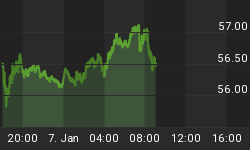There’s been a lot of dramatic talk lately about the evils of the new wave of corporate buybacks that soared past $1.1 trillion in 2018 on the back of Trump’s corporate tax breaks.
Those that view massive stock buybacks as evil say they don’t benefit the vast majority of Americans. After all, the point of tax breaks would be for corporations to be free to invest more money, which would lead to more jobs and higher wages.
When companies buy back their own stock, they boost their own value, which is shared with shareholders and executives rather than workers. In other words, buybacks benefit the wealthy.
Fair enough. It is what it is.
But the real question we should be asking right now is whether buybacks are outpacing corporate investments, and Goldman Sachs says that data shows they aren’t. Despite all the buyback panic, it would seem that companies are indeed reinvesting profits more meaningfully on things such as higher wages and other benefits for workers, as well as research and development.
Last week, Goldman Sachs released a report concluding that lawmakers shouldn’t be sounding alarm bells because they’re spending tax gains on the core business.
In fact, Goldman strategist David Kostin says that nothing much has changed since 1990: capital expenditures and R&D spending still account for the “largest share of US corporate cash outlays”.
It’s an important message because lawmakers from both sides of the gaping political divide are threatening to propose legislation that would reduce incentives for buybacks. (It’s a big enough threat to prompt Goldman to release a report defending buybacks.) Related: Why Twitter's CEO Is Backing A New Bitcoin Boom
According to Goldman, in this economy, it’s not simply a question of buybacks versus reinvestment: one doesn’t necessarily preclude the other.
By way of evidence, the report points out that we need to look no further than growth investment, which saw an impressive 13-percent boost last year, hitting $1.1 trillion.
"Contrary to popular belief, executives whose compensation depends on EPS did not allocate a greater proportion of total cash spending to buybacks in 2018 than companies where management pay was not linked to EPS," the Goldman report maintains.
Goldman doesn’t expect this year to be any different. Its strategists estimate that growth investments will hit $1.2 trillion.
That figure would represent almost 40 percent of the total cash outlays by S&P companies.
"One of the greatest misconceptions in the public discourse surrounding corporate buybacks is the belief that managements repurchase stock in an attempt to inflate earnings per share (EPS) and meet incentive compensation targets," the report says.
Related: Lobster, Golf Carts And Fidget Spinners: What’s In The Federal Budget?
Still, Goldman’s buyback cheerleading doesn’t address one underlying problem many have with the system: corruption. There’s nothing fair about buybacks because “corporate insiders can also game the system”, writes Edward Hadas in a Reuters opinion piece. Hadas recalls evidence presented by an SEC commissioner last year that “suggested senior executives are taking advantage of buyback-related information. They tend to wait to sell their shares until just after the announcement of a buyback has pushed up the share price”.
It’s also slightly unsettling to know that America’s big banks are, well, banking almost entirely on stock buybacks for this year’s earnings growth, CNBC reported, citing KBW analysts led by Fred Cannon.
KBW used JP Morgan Chase as an example, noting that some 63 percent of the median expected earnings per share growth for this year is directly linked to share buybacks.
So, while Goldman feels the need to defend massive buybacks and prove that reinvestment is still happening at the right pace, that’s not the whole story, and it’s not a huge bed of roses.
By David Craggen for Safehaven.com


















evil scumbags
share buybacks are a racket
ponzi finance misuse of profits